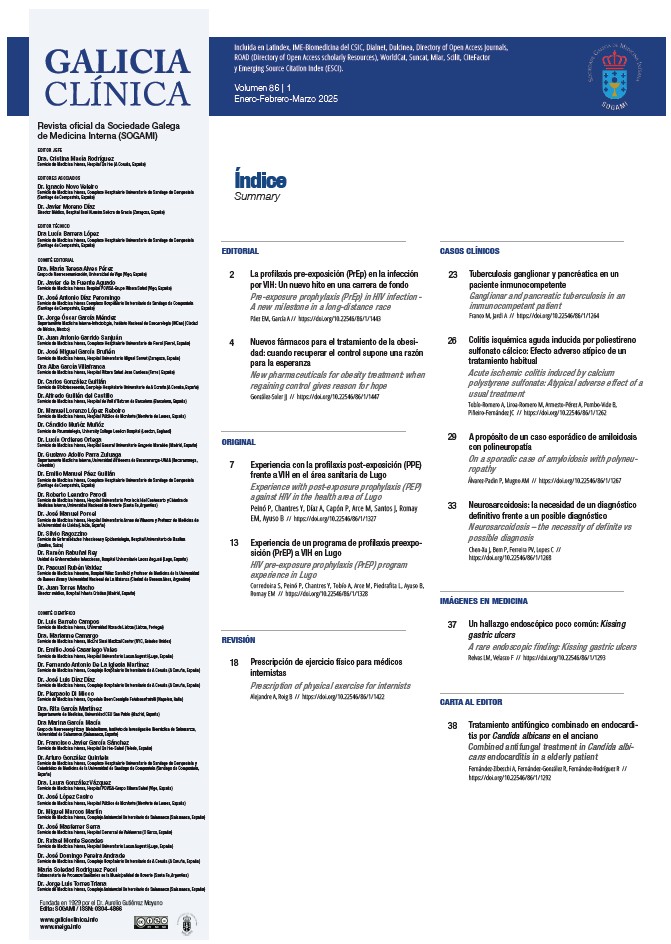Abstract
Cation exchange resins are a pharmacological group indicated primarily in the correction of hydroelectrolytic disorders, mainly hyperkalemia. Its mechanism consists in exchanging cationic ions with the medium to favor its elimination. However, the crystals that make up these resins adhere to the intestinal walls and can cause inflammation, ulceration and focal ischemia. The visualization of the polystyrene sulfonate crystals in a biopsy of the colon is the complementary test that confirms the diagnosis, and the treatment is based fundamentally on the response of the drug and the symptomatic management in the milder cases, the invasive measures and even the surgery for cases more severe.

This work is licensed under a Creative Commons Attribution-NonCommercial-NoDerivatives 4.0 International License.
Copyright (c) 2025 Galicia Clínica


